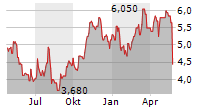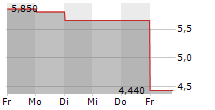
SAN DIEGO, April 8, 2024 /PRNewswire/ -- Akeso, Inc. (9926.HK) today announced that the positive interim analysis results from Phase III clinical study of Cadonilimab (PD-1/CTLA-4 BsAb) combined with XELOX (capecitabine plus oxaliplatin) as first-line treatment for unresectable locally advanced or metastatic gastric or gastroesophageal junction (G/GEJ) adenocarcinoma (AK104-302/COMPASSION-15) were released presented in the form of oral presentation at the 2024 American Association for Cancer Research (AACR).
The COMPASSION-15 is the world's first Phase III clinical study of PD-1/CTLA-4 bispecific antibody combined with chemotherapy as first-line treatment for gastric cancer. In COMPASSION-15, the proportions of patients with PD-L1 CPS <5 (PD-L1 low expression) and PD-L1 CPS <1 (PD-L1 negative) in the intention-to-treat population (ITT) were 49.8% and 23%, respectively, which is much higher than that in previous Phase III clinical studies of immune checkpoint inhibitors combined regimens for first-line gastric cancer globally. Previous studies have shown that patients with PD-L1 low expression/negative generally have poor efficacy with immunotherapy.
As of the interim analysis, with a median follow-up of 18.7 months, the proportions of subsequent systemic treatment in the Cadonilimab combination therapy group and chemotherapy group were 36.4% vs 50.5%, respectively, and the proportions of subsequent treatment using PD-1/PD-L1 inhibitors were 11.1% vs 21.6%, respectively.
The results showed that regardless of PD-L1 expression, Cadonilimab combination therapy significantly prolonged patients' overall survival benefits and reduced the risk of death compared to chemotherapy, with outstanding benefits in objective response and long-term survival. Even for the patients with low PD-L1 expression, it also showed excellent efficacy, which is expected to compensate for the limited efficacy of PD-1 monotherapy for first-line treatment of low PD-L1 expression gastric cancer, providing a more comprehensive and efficient immunotherapy regimen for advanced gastric cancer patients.
Cadonilimab plus chemo therapy significantly prolonged survival benefits as first-line treatment for advanced gastric cancer, comprehensively reducing the risk of progression/death.
l In the ITT population,the median overall survival (mOS) was longer in the combination therapy group versus the chemotherapy group (HR=0.62 ,mOS 15.0mo vs 10.8 mo; P<0.001),with a 39% prolongation of mOS and a 38% reduction in the risk of death;
- The OS benefits stratified by different CPS values were consistent with the overall population, with equally excellent efficacy in low PD-L1 expression:
- When PD-L1 CPS=5, the mOS of Cadonilimab combination therapy group compared to the chemotherapy group was not reached vs 10.6 months, with a 44% reduction in the risk of death (HR=0.56, P<0.001);
- When PD-L1 CPS<5, the mOS was 14.8 months vs 11.1 months, with a 33.3% prolongation of mOS and a 30% reduction in the risk of death (HR=0.7, P=0.011);
- The median progression-free survival (mPFS) in the ITT population was 7.0 months and 5.3 months, respectively, with a 32% prolongation of mPFS and a 47% reduction in the risk of disease progression (HR=0.53, P<0.001).
Cadonilimab combination therapy as first-line treatment for advanced gastric cancer is highly efficient in anti-tumor response, doubling the duration of response.
- The objective response rates (ORR) of Cadonilimab combination therapy and chemotherapy were 65.2% and 48.9%, respectively, with a significant improvement in tumor treatment response with Cadonilimab combination therapy, increasing ORR by 33.3%;
- The median duration of response (mDOR) with Cadonilimab combination therapy was twice that of chemotherapy (8.8 months vs 4.4 months).
Cadonilimab combination therapy significantly enhances long-term survival, with the advantage becoming more prominent with longer follow-up periods.
- In the ITT population, the 12-month OS rates of Cadonilimab combination therapy vs chemotherapy were 57.3% vs 43.7%; when CPS=5, the 12-month OS rates were 58% vs 44.1%; when CPS<5, the 12-month OS rates were 56.9% vs 45.1%;
- In the ITT population, the 18-month OS rates of Cadonilimab combination therapy vs chemotherapy were 45.8% vs 25.5%; when CPS=5, the 18-month OS rates were 51.2% vs 23.5%; when CPS<5, the 18-month OS rates were 44.1% vs 27.5%;
In January 2024, based on the results of the AK104-302/COMPASSION-15 study, Akeso's new drug application (NDA) for Cadonilimab combined with XELOX as first-line treatment for unresectable locally advanced or metastatic G/GEJ adenocarcinoma has been successfully accepted.
SOURCE Akeso, Inc.




